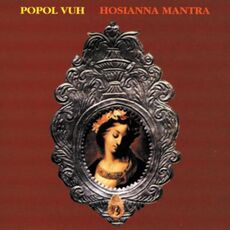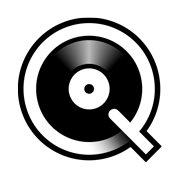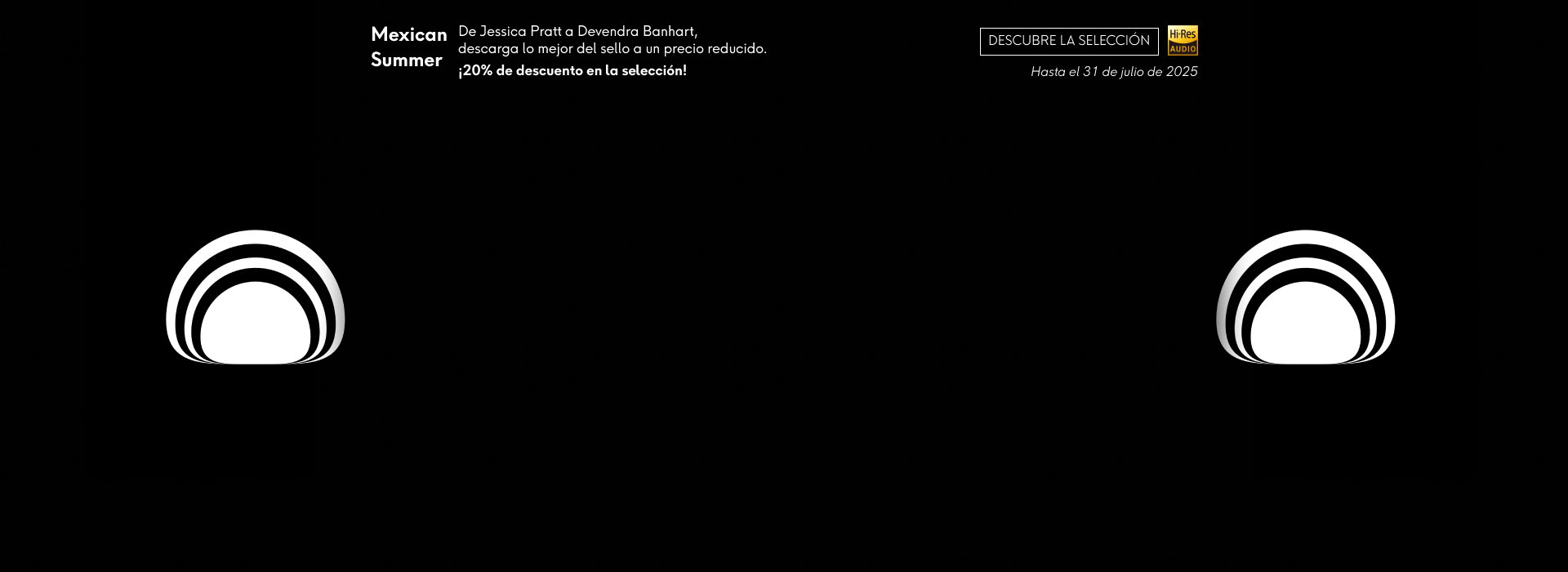
Streaming ilimitado
Escuche este álbum ahora en alta calidad en nuestras apps
Comenzar mi periodo de prueba gratis y escuchar este álbumDisfrute de este álbum en las apps Qobuz con sususcripción
SuscribirseDisfrute de este álbum en las apps Qobuz con sususcripción
Descarga digital
Compre y descargue este álbum en múltiples formatos, según sus necesidades.
Florian Fricke pioneered the use of synthesizers in German rock, but by the time of Hosianna Mantra he had abandoned them (eventually selling his famous Moog to Klaus Schulze). While In den Gärten Pharaos had blended synths with piano and African and Turkish percussion, Hosianna Mantra focuses on organic instrumentation. Conny Veit contributes electric guitar, but other than that, Fricke pulls the plug and builds the album around violin, tamboura, piano, oboe, cembalo, and Veit's 12-string, often with Korean soprano Djong Yun's haunting voice hovering above the arrangements. As the album's title suggests, Fricke conceived of Hosianna Mantra as a musical reconciliation of East and West, a harmonization of seemingly opposed terms, combining two devotional music traditions. That notion of cultural hybridity resonates throughout. On "Kyrie" droning tamboura, simple piano patterns, ethereal, gull-like guitars, and yearning oboe ebb and flow before coalescing in a passage of intensity and release. The epic title track adds another dimension to the fusion, emphasizing a Western rock sound with Veit's spectacular playing to the fore, simultaneously smoldering and liquid, occasionally yielding to Djong Yun's celestial vocals. Above all, Fricke envisioned this as sacred music, intimately linked to religious experience; however, as his musical synthesis of disparate religious traditions indicates, he was seeking to foment a spiritual experience beyond the specificity of any particular faith. Indeed, Fricke called this album a "mass for the heart" and that aspect can be heard most succinctly on the melancholy "Abschied" and the gossamer-fragile "Segnung," which blend an austere hymnal sensibility with a more mystical vibe. Julian Cope has said that Hosianna Mantra sounds like it was made in a "cosmic convalescent home" -- an excellent description underscoring the timeless, healing quality of this music, which is far removed from the everyday world and yet at one with it.
© Wilson Neate /TiVo
Está escuchando muestras.
Escuche más de 100 millones de pistas con un plan de streaming ilimitado.
Desde 12,49€/mes

Florian Fricke, Composer - Popol Vuh, Composer, Performance, MainArtist
© 1970 Edition Popol Vuh under exclusive license to BMG Rights Management GmbH ℗ 1972 Edition Popol Vuh under exclusive license to BMG Rights Management GmbH
Florian Fricke, Composer - Popol Vuh, Composer, Performance, MainArtist
© 1970 Edition Popol Vuh under exclusive license to BMG Rights Management GmbH ℗ 1972 Edition Popol Vuh under exclusive license to BMG Rights Management GmbH
Florian Fricke, Composer - Popol Vuh, Composer, Performance, MainArtist
© 1970 Edition Popol Vuh under exclusive license to BMG Rights Management GmbH ℗ 1972 Edition Popol Vuh under exclusive license to BMG Rights Management GmbH
Florian Fricke, Composer - Popol Vuh, Composer, Performance, MainArtist
© 1970 Edition Popol Vuh under exclusive license to BMG Rights Management GmbH ℗ 1972 Edition Popol Vuh under exclusive license to BMG Rights Management GmbH
Florian Fricke, Composer - Popol Vuh, Composer, Performance, MainArtist
© 1970 Edition Popol Vuh under exclusive license to BMG Rights Management GmbH ℗ 1972 Edition Popol Vuh under exclusive license to BMG Rights Management GmbH
Florian Fricke, Composer - Popol Vuh, Composer, Performance, MainArtist
© 1970 Edition Popol Vuh under exclusive license to BMG Rights Management GmbH ℗ 1972 Edition Popol Vuh under exclusive license to BMG Rights Management GmbH
Florian Fricke, Composer - Popol Vuh, Composer, Performance, MainArtist
© 1970 Edition Popol Vuh under exclusive license to BMG Rights Management GmbH ℗ 1972 Edition Popol Vuh under exclusive license to BMG Rights Management GmbH
Florian Fricke, Composer - Popol Vuh, Composer, Performance, MainArtist
© 1970 Edition Popol Vuh under exclusive license to BMG Rights Management GmbH ℗ 1972 Edition Popol Vuh under exclusive license to BMG Rights Management GmbH
Florian Fricke, Composer - Popol Vuh, Composer, Performance, MainArtist
© 1970 Edition Popol Vuh under exclusive license to BMG Rights Management GmbH ℗ 1972 Edition Popol Vuh under exclusive license to BMG Rights Management GmbH
Presentación del Álbum
Florian Fricke pioneered the use of synthesizers in German rock, but by the time of Hosianna Mantra he had abandoned them (eventually selling his famous Moog to Klaus Schulze). While In den Gärten Pharaos had blended synths with piano and African and Turkish percussion, Hosianna Mantra focuses on organic instrumentation. Conny Veit contributes electric guitar, but other than that, Fricke pulls the plug and builds the album around violin, tamboura, piano, oboe, cembalo, and Veit's 12-string, often with Korean soprano Djong Yun's haunting voice hovering above the arrangements. As the album's title suggests, Fricke conceived of Hosianna Mantra as a musical reconciliation of East and West, a harmonization of seemingly opposed terms, combining two devotional music traditions. That notion of cultural hybridity resonates throughout. On "Kyrie" droning tamboura, simple piano patterns, ethereal, gull-like guitars, and yearning oboe ebb and flow before coalescing in a passage of intensity and release. The epic title track adds another dimension to the fusion, emphasizing a Western rock sound with Veit's spectacular playing to the fore, simultaneously smoldering and liquid, occasionally yielding to Djong Yun's celestial vocals. Above all, Fricke envisioned this as sacred music, intimately linked to religious experience; however, as his musical synthesis of disparate religious traditions indicates, he was seeking to foment a spiritual experience beyond the specificity of any particular faith. Indeed, Fricke called this album a "mass for the heart" and that aspect can be heard most succinctly on the melancholy "Abschied" and the gossamer-fragile "Segnung," which blend an austere hymnal sensibility with a more mystical vibe. Julian Cope has said that Hosianna Mantra sounds like it was made in a "cosmic convalescent home" -- an excellent description underscoring the timeless, healing quality of this music, which is far removed from the everyday world and yet at one with it.
© Wilson Neate /TiVo
Acerca del álbum
- 1 disco(s) - 9 pista(s)
- Duración total: 00:42:04
- Artistas principales: Popol Vuh
- Compositor: Various Composers
- Sello: BMG Rights Management GmbH
- Género Electrónica Ambientes
© 1970 Edition Popol Vuh under exclusive license to BMG Rights Management GmbH ℗ 1972 Edition Popol Vuh under exclusive license to BMG Rights Management GmbH
Mejorar la información del álbum
 Por qué comprar en Qobuz...
Por qué comprar en Qobuz...
-
Escuche su música en streaming o descárguela
Compre un álbum o una pista individual. O escuche nuestro catálogo completo con nuestras suscripciones ilimitadas de streaming en alta calidad.
-
Sin DRM
Las pistas descargadas le pertenecen, sin límite de utilización. Y además las puede descargar todas las veces que lo necesite.
-
Elija el formato que más le convenga
Descargue sus compras en una amplia variedad de formatos (FLAC, ALAC, WAV, AIFF...) dependiendo de sus necesidades.
-
Escuche sus compras en nuestras apps
Descargue las aplicaciones Qobuz para smartphones, tabletas u ordenadores, y escuche sus compras en cualquier lugar.



